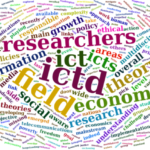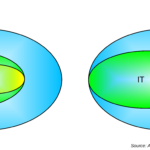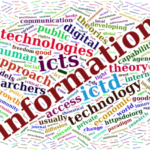Dear colleagues,
I have been following with interest the current discussion on UNDP’s anti-corruption practices and emerging trends. In doing so, I have noted that so far that Information and Communication Technologies (ICTs) for development have been marginally mentioned. My contribution will focus on this area, which UNDP has been supporting for almost 20 years now.
Today’s focus (and hype, if I may add) by ICT for development (ICTD) practitioners is centered on social media/social networks. This is due, to a large extent, to the so-called Arab Spring and other social movements that have recently emerged in an era where economic, social and environmental crises seem to be touching most if not all countries – including “developed” countries and well-established democracies.
Social media, we hear, has “democratized” access to the public sphere and enhanced democratic space by giving voice to those who previously have no way of engaging with public institutions -and private corporations, I should add. We thus seemed to have moved away from traditional access issues, the so-called “digital divide”, to bread and butter democratic governance issues such as participation, transparency and accountability. Nowadays it is not uncommon to read how the Internet should be part of the human rights agenda and how social media is the ultimate tool to promote anti-corruption efforts.
Here, I think we should be careful to clear distinguishing market expansion of products and networks from the enhancement of core democratic governance principles. The fact that more people can consume a given product or have greater access to information does not necessarily entail gains in governance principles. The former can certainly be a necessary condition for the latter but the link is not automatic. We need to create and strengthen such link through policy advice and programme implementation that focus on the governance side of the equation.
Furthermore, the statistical evidence on access to social networks however points in a different direction. Effective participation in social networks require, in most cases, full access to the Internet. We know that today there are only 2.5 billion (35% of the worlds’ population) people on the Internet -and most of them happen to live in “industrialized” countries. This number sets the maximum theoretical limit for users of social networks -and de facto exclude a large number of poor countries where Internet penetration is still very incipient.
But this is certainly not the case when we look at mobile phone penetration rates around the globe. Today, there are over 6 billion mobile subscribers and most of them (close to 80%) live in developing countries. This seems to be exactly the opposite situation when we compare it to Internet penetration. For example, while Internet penetration is only abut 15% in Africa, mobile phones are already available to almost 53% of the population in the continent. In any event, most of these subscribers have access to a basic phone -not the fancy smart phones that seemed so common in the developed world- which allows them to send messages (texting) across a global network -at a cost!.
It is essential that we keep these facts in mind when we make policy recommendations to programme countries on how to harness ICTs to promote social inclusion, support pro-poor programmes, call for participation from those who have had no voice in the past, enhance transparency and accountability, and foster overall sustainable human development.
What does all this means in practical terms?
First, allow me to recall the Administrator’s April 20102 message (as UNDG Chair and Vice-Chair of the UN Group on Information Society) to UN country teams on the need to integrate ICTD in UNDAFs. This is in line with global commitments made since Tunis 2005 (World Summit on the Information Society, WSIS) and ECOSOC resolution 2009/7 calling for action on this. Given that anti-corruption is a critical pillar of democratic governance and development, including ICTD approaches in this context could put the COP at the forefront of efforts.
This could server as the overall chapeau to an approach that can then focus on the following areas:
Enhancing participation, transparency and accountability, three of the core pillars of Democratic Governance. Access to information, now greatly facilitated by ICTs, and new social networks and mobile technologies can empower people to be part and parcel of decision-making processes and demand more transparency at all levels. There is no possible accountability if there is no transparency. And neither of them can be effective without stakeholder participation -which ICTs can easily enhance.
Fostering public sector efficiencies, effectiveness and transparency. ICTs can help improve the internal function of government, foster pro-poor public service delivery and improve government-citizen interactions if deployed strategically. This is critical from the perspective of anti-corruption efforts as ICTs are the catalyst to generate change within public institutions and take down processes that are prone for systematic abuse. But ICTs can also introduce new challenges that need to be address. Here, the governance of public ICT systems needs to be addressed too.
Capitalizing on innovation and innovative approaches. Innovation is now taking place in developing countries too, on a bottom-up basis. Social innovators and social entrepreneurs in developing countries are taking matters into their own hands and providing local communities with local solutions to critical local problems. A plethora of mobile applications using text messaging are being developed and deployed, particularly in Africa where the development gaps are still wide. Moreover, mobile apps that are usedto monitor elections and report Human Rights abuses can also be used for other governance related purposes such as efforts to thwart corruption. The core issue is the way in which UNDP programme countries and other partners can capitalize on these local developments and use the old and new ICTs to promote and strengthen anti-corruption policies and programmes.
Some examples of the above include:
India’s “I Paid a Bribe” initiative undergirded civil society efforts such as “India against Corruption” and helped to pressure the government into passing a long sought after anti-corruption law. “I Paid a Bribe” allow citizens to report via SMS and smart phone the nature, pattern and frequency of acts of corruption. “Bribespot”, a global crowd-sourcing application help identifying situations in which people have been bribed or were forced to bribe.
M-Paisa: eliminating middlemen in financial transactions can help address possible spaces for corruption, and here mobile financial services can help. By facilitating payments to be made directly through mobile devices (e.g., “m-Paisa” application converts cash into e-money which is stored on the phone and sent through mobile networks as payment.
Kenya’s ‘Budget Tracking Tool’ connects communities directly with the national development agenda (this project publishes data on budget allocation and receives around 4,500 SMS messages a month and more than 5,700 hits on its website, suggesting the demand for these kinds of services).
‘Huduma’ (already familiar to the COP), another Kenyan innovation, channels suggestions and concerns from citizens directly to service providers and policy makers through SMS and the website. As platforms like these disseminate around the world and can be adapted to the local contexts and needs, more citizens will have the chance to monitor their governments and hold them accountable as an anti-corruption effort.
In this context, the CoP could then consider the following points for further discussion at the gathering in Brazil:
Enhance the understanding on the role ICTD and e-governance can play in anti-corruption efforts among CoP participants by focusing on the above mentioned issues. This is not about technology but rather about the opportunities and challenges that ICTs can play in effective anti-corruption policies and frameworks and enhancing their scope by providing new solutions and enhancing people participation in these processes
Jump on the innovation wagon and harness the new approaches and solutions that are emerging from the Global South and share them across all partners and stakeholders. The CoP can disucss these options while also focusing on the policies and entry points required to make this happen within ongoing anti-corruption efforts and existing anti-corruption institutions and organizations
Explore concrete examples and consider ongoing programmes that could benefit in the short run with the introduction of ICTs into their portfolios while looking for synergies between existing UNDP anti-corruption and e-governance programmes already operational and working almost independently
The e-governance team in NY is ready to support these efforts and we are on standby more, ready to respond and support the CoP and accompany follow-up on 2013 and beyond.
Cheers, Raúl





